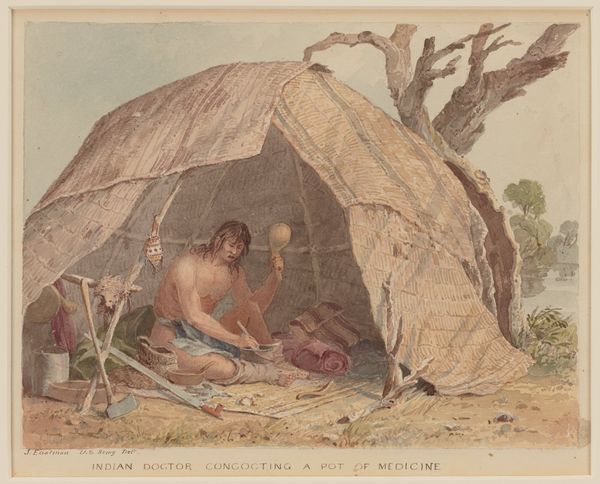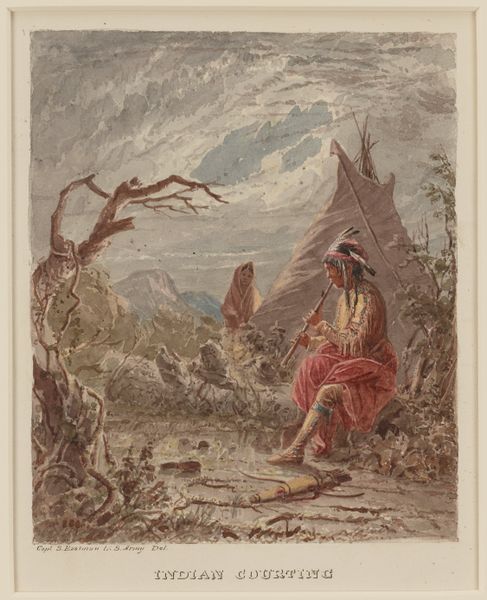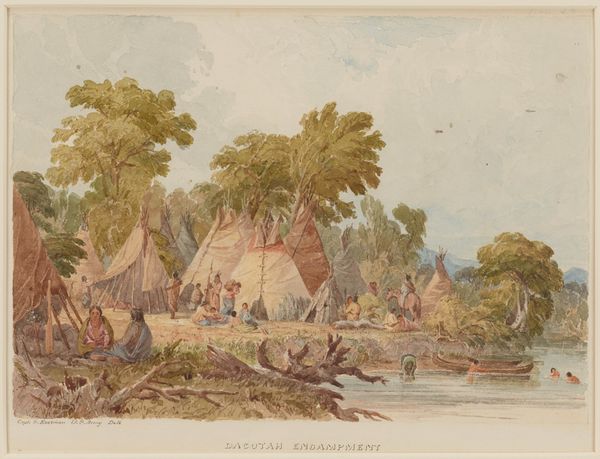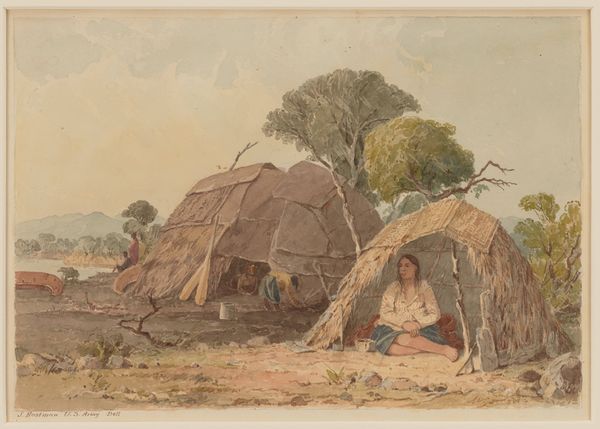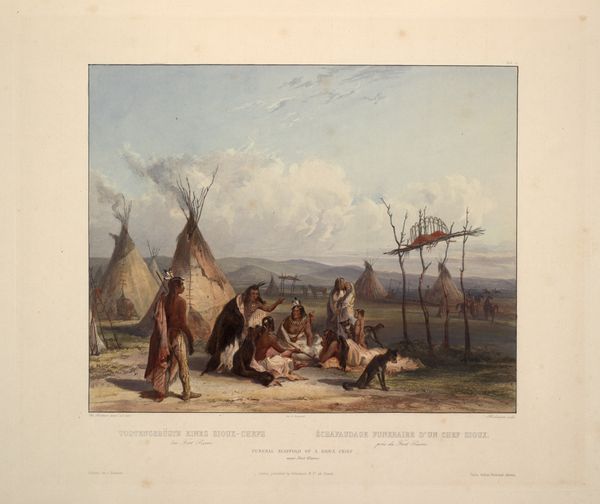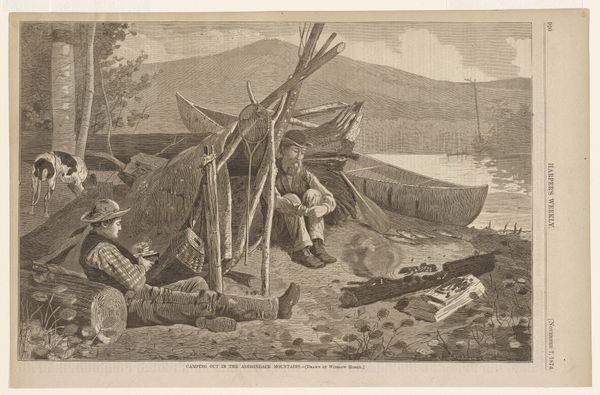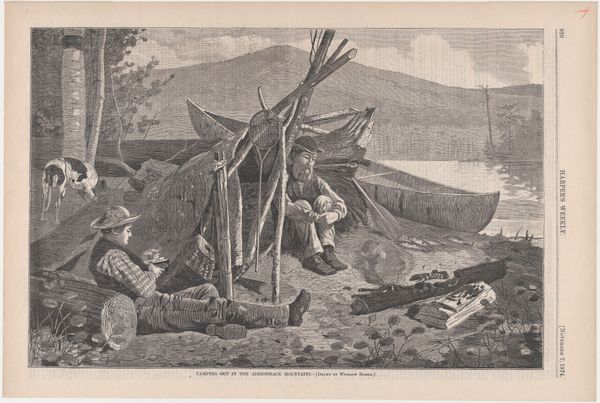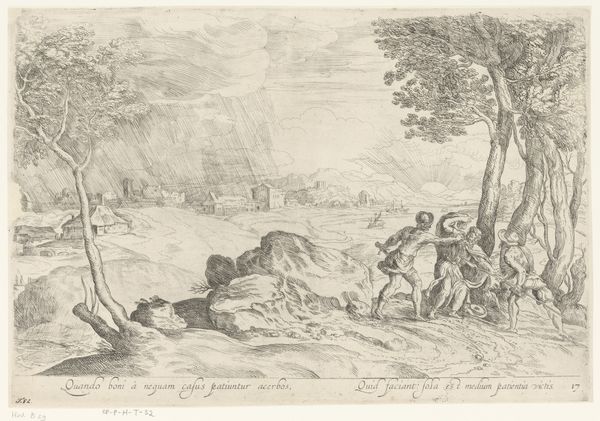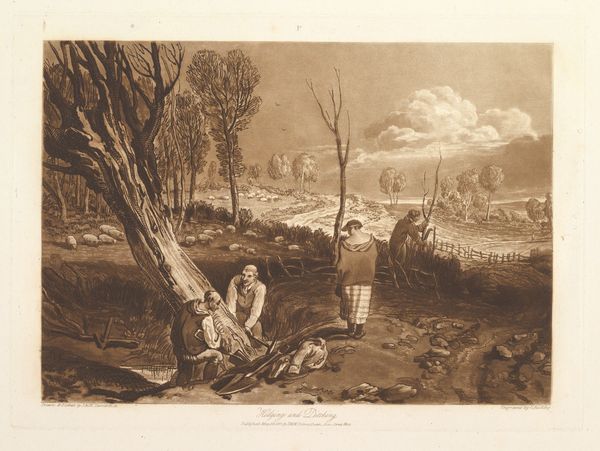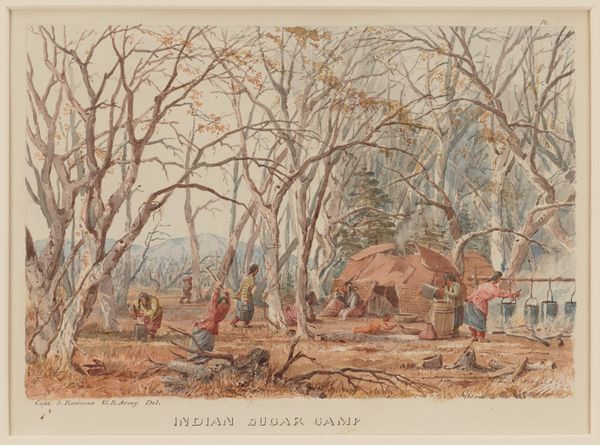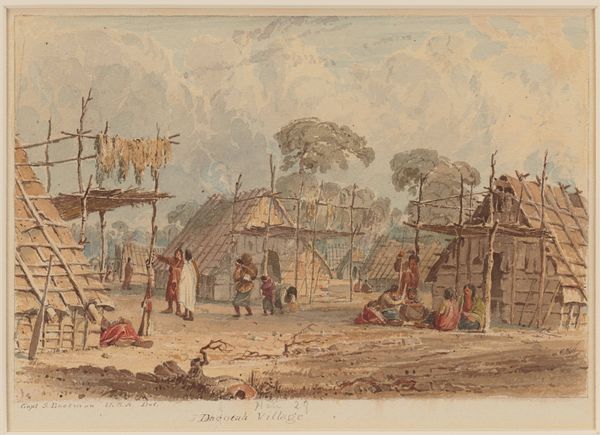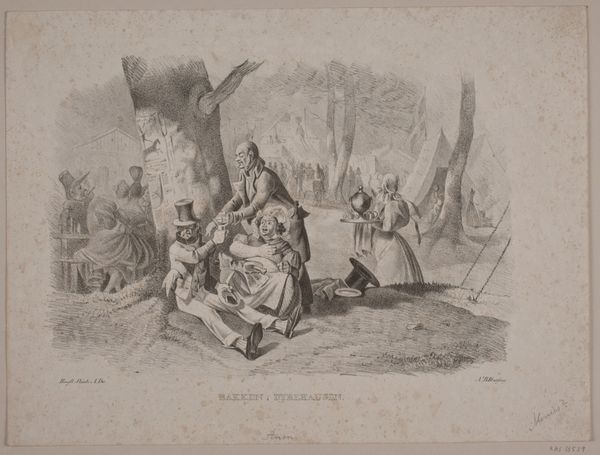
Dimensions: 7 × 9 1/2 in. (17.8 × 24.1 cm) (image)9 3/8 × 12 1/4 in. (23.8 × 31.1 cm) (sheet)17 9/16 × 21 1/2 × 1 1/8 in. (44.6 × 54.6 × 2.9 cm) (outer frame)
Copyright: Public Domain
Seth Eastman, a 19th-century American artist, created "Protecting the Cornfields from Vermin" using watercolor and graphite. The cool washes and neutral palette create a somber mood, contrasting the vulnerability of the scene with the implied threat to the crops. The composition, viewed through the lens of structuralism, can be deconstructed into binary oppositions: civilization versus nature, safety versus danger, clothed versus unclothed. The cornfields represent cultivation and sustenance, while the vermin symbolize potential destruction. The figure walking out to the fields is unclothed, seemingly unprotected, which destabilizes established meanings of protection and vulnerability. Eastman's delicate application of watercolor, reminiscent of early ethnographic documentation, obscures a more complex engagement with cultural representation. The painting's semiotic system uses visual elements to convey cultural codes and meanings. The contrast between the woman's vulnerability and the vital task she undertakes challenges fixed notions of gender, labor, and the relationship between humans and the natural world. By examining the formal qualities of the artwork, we gain insights into the intricate relationship between aesthetics, representation, and cultural discourse.
Comments
minneapolisinstituteofart almost 2 years ago
⋮
U.S. Army Captain Seth Eastman was a trained artist who served twice on the frontier at Minnesota’s Fort Snelling, from 1830 to 1832 and again from 1841 to 1848. His extensive firsthand, peaceful encounters with Native Americans gave him extraordinary opportunities to observe their customs and practices, which he documented in his art. This moonlit scene is based not on observation, however, but on a written account. The watercolor belongs to a series that he made between 1849 and 1855 to illustrate Henry Rowe Schoolcraft’s six-volume survey, "Historical and Statistical Information Respecting the History, Condition and Prospects of the Indian Tribes of the United States" (Philadelphia: Lippincott, Grambo & Co., 1851-57). Mia’s 35 watercolors and drawings for the project represent an astounding array of subjects: muskrat hunting, fish spearing, pest control, rice gathering, maple sugaring, shelter, travel, medicine, mourning, dancing, civics, and topography. With such variety and Eastman’s well-informed clarity of depiction, they constitute an unparalleled visual account of native ways in our region.
Join the conversation
Join millions of artists and users on Artera today and experience the ultimate creative platform.
